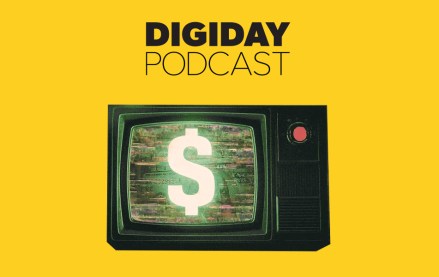‘On everybody’s mind’: Flexibility will be a focal point again in this year’s upfront negotiations

As TV ad buyers and sellers return to the upfront negotiating table with economic uncertainty looming overhead, flexibility will be a big bargaining chip that both sides expect to haggle over. “There’s no question that flexibility is on everyone’s mind,” said one TV network executive.
This year the flexibility conversation will center around to what extent the loosened cancelation options ad buyers and sellers agreed to in the 2020 upfront and retained in the 2021 upfront will remain intact in their 2022-23 upfront deals. “The continued need for flexibility is a core [concern] for everyone. Every client is very cautious on making long-term commitments because there’s a lot of uncertainty,” said Stacey Stewart, U.S. chief marketplace officer at UM Worldwide.
Naturally, advertisers and their agencies would like to maintain the options they have gained in the past two years to cancel up to 50% of their quarterly upfront commitments as late as 30 days before a quarter begins. And naturally, TV networks would like to return to the firmer cancelation terms agreed to prior the pandemic when the cancelation amounts skewed closer to 30% and cancelation windows to 60 days.
“We’re not going to lose ground on flexibility this year,” said Sharon Cullen, president of integrated investment at Omnicom Media Group’s Hearts & Science.
However, some agency executives are also seeking even more favorable cancelation options in this year’s upfront, such as lobbying for clients who have operated under 45-day cancelation windows in the past two upfronts to move to 30-day cancelation windows, especially in light of the macroeconomic factors, like supply chain issues, higher inflation and rising interest rates, that are affecting advertisers’ businesses.
“We’re not going backwards on terms. If anything, instead of 45 days I want 30 days; I want IAB terms,” said one agency executive, referring to the Interactive Advertising Bureau’s standard cancelation option that allows an advertiser to cancel 100% of a commitment 14 days ahead of time.
The TV networks aren’t going to go for that, though. A second TV network executive said they expect the number of advertisers to cancel portions of third quarter 2022 upfront commitments to be “a little heavier than normal” given the macroeconomic conditions affecting advertisers. “In this economy, options are being taken, and on the selling side, we need to firm up a bit,” said this executive.
Moreover, TV network executives are wary of providing advertisers with so much flexibility in their upfront commitments that they undermine the value of these deals for the networks, which provide fixed prices to advertisers that are lower than rates paid outside the upfront in exchange for the networks receiving guaranteed revenue. “The issue around optionality is it becomes not enough of a commitment,” said the first TV network executive.
How the flexibility negotiation appears likely to play out is that, rather than cancelation options loosening further or reverting to pre-pandemic terms, the provisions of the past two upfront cycles will remain in place for at least another year.
“We’re going to be pushing for more [flexibility]. They’re going to be pushing for less. The happy medium might be, ‘Fine, we’ll just maintain,’” said the agency executive.
More in Future of TV

Future of TV Briefing: CTV ad market’s transparency problem hits a boiling point
This week’s Future of TV Briefing recaps a heated discussion about transparency in the connected TV ad market that took place during the Digiday Programmatic Marketing Summit.

What’s in and out in this year’s TV and streaming ad upfront market
Digiday senior media buying editor Michael Bürgi joined the Digiday Podcast to discuss what are set to be the hot topics heading into this year’s upfront market.

CMO Strategies: A guide to marketers’ success metrics for ad-supported streamers, including Netflix, Prime Video and Roku
In this report, we examine the success metrics advertisers consider when placing ads on streaming platforms and the challenges they face on those platforms.








